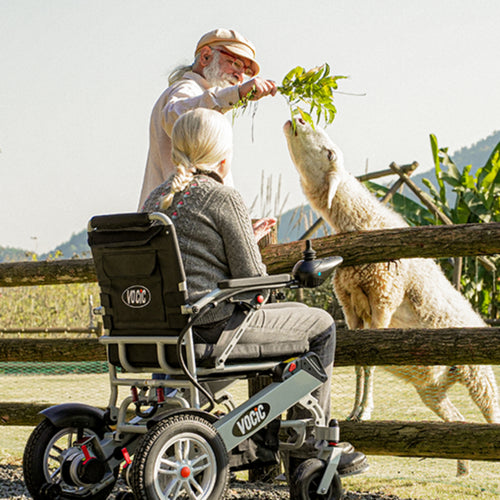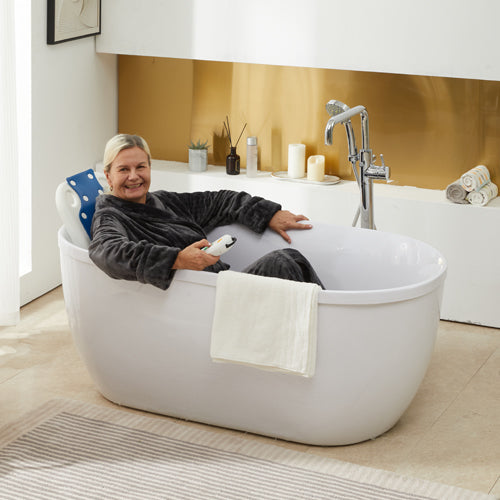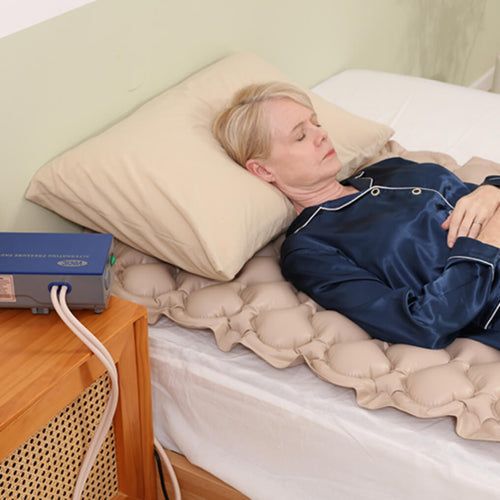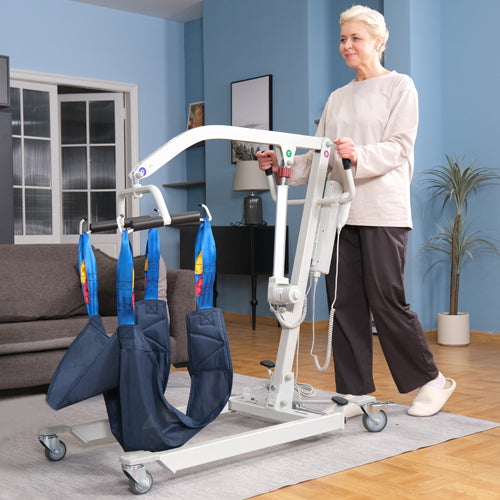Caregivers may face various infection risks when assisting the elderly with bathing. Taking appropriate precautions can effectively reduce these risks. This article mentions eight measures, such as bath aids, wearing personal protective equipment (PPE), maintaining hand hygiene, regular disinfection, and more. Additionally, opting for no-installation-needed bath aids for seniors can help save costs.
What Infections Can Threaten Caregiver Safety?
There are four main transmission routes, including bacterial infections, viral infections, fungal infections, and bloodborne infections.
- Bacterial infections like MRSA can be transmitted through contact with damaged skin. Caregivers may encounter urinary tract infection bacteria during perineal cleaning.
- Viral infections, such as influenza, the common cold, and norovirus, can spread through close contact and contaminated surfaces.
- Fungal infections like Candida can be contracted while cleaning moist skin folds.
- Bloodborne infections may be transmitted through contact with blood or body fluids from open wounds or lesions.
What Safety Tips and Preventive Measures Can Protect Caregivers?
Here are some prevention measures to protect caregivers:
- Using Bath Aids for Seniors: Utilizing various bathing aids for elderly can enhance safety and independence during bathing for the elderly people, reducing physical contact and minimizing the risk of cross-infection.
- Wearing Personal Protective Equipment (PPE): This includes gloves, goggles, and waterproof aprons to prevent direct contact with bodily fluids, secretions, and damaged skin.
- Maintaining Hand Hygiene: It's essential to thoroughly wash hands with soap and water or alcohol-based hand sanitizers before and after contact with elderly individuals, handling contaminated items, or cleaning equipment.
- Regular Disinfection: Cleaning and disinfecting all bathing equipment, tools, and surfaces regularly helps prevent the spread of bacteria and viruses.
- Proper Waste Handling: Dispose of disposable items immediately after use and follow proper medical waste disposal protocols.
- Monitoring Health Conditions: Caregivers should regularly monitor their own and the elderly person's health conditions. Prompt medical attention and measures should be taken if signs of infection are detected.
- Regular Training and Education: Training on common infection prevention and management practices, correct use of bathroom assistive devices, bathing frequency for the elderly, etc., is crucial.
These measures help protect caregivers by minimizing their exposure to infectious agents while caring for elderly individuals during bathing and personal care routines.
What Are Some Non-installed Bath Aids?
1. Bath Chair Lift:

The bath chair lift for seniors allows seniors to get in and out of the bathtub with minimal assistance. Many bathtub lifts are designed to be user-friendly, with controls that the elderly can easily operate. By enabling the elderly to bathe independently, the bath chair lift reduces close physical contact between the caregiver and the elderly person. This can decrease the risk of transmitting infections, which is especially important in times of contagious illnesses. A foldable bath lift with waterproof materials can ensure the safety of the elderly, just like the VOCIC AX07 electric bath lift did.
2. Anti Slip Pad

Anti-slip pads are typically easy to install and maintain. By reducing the likelihood of slips and falls, anti-slip pads help prevent injuries that might require significant caregiver assistance. This can help caregivers avoid physical strain from having to catch or lift a falling elderly person.
3. Bathtub Step Stool
Using a step stool can help elderly individuals enter and exit the bathtub more easily. Additionally, with a step stool, elderly people do not require assistance from caregivers to lift or support them into the bathtub during bathing. This allows them to use the bathtub more independently and safely, reducing the risk of falls or slips and decreasing the need for caregiver intervention.
4. Shower Chair

The shower chair provides a stable and secure seat, allowing elderly individuals to sit independently during showers without needing assistance from caregivers. With a shower chair, elderly people can enter the shower on their own and sit down, eliminating the need for caregivers to support or help them stand or move throughout the entire process.
5. Body Washer Long Handle Bathing Aid

The long-handled bathing aid for seniors is designed to be easy for elderly people to use on their own. Its long handle helps elderly individuals easily clean various parts of their bodies, including the back and feet, reducing the need for assistance from caregivers. The long-handled bath aid allows elderly people to maintain balance during bathing without frequent bending or reaching, thus reducing the risk of falling or losing balance.
Caregiver Tips on Assisting With Users’ Bathing Safety
In addition to protecting the caregiver's safety, ensuring the patient's safety during bathing is also essential. Planning can help both of you better enjoy bath time.
- Before bathing, prepare the patient's bathing supplies, towels, and personal clothing.
- Make sure the room temperature is comfortable for the patient, not just for you.
- To consider modesty, cover the patient's private areas.
- Test the water temperature before the patient enters the bath.
- When rinsing, move the showerhead around the patient instead of asking them to move.
- If you leave the patient to bathe alone, stay nearby to assist if needed.
- If you need to use bathtub aids, check their safety and stability before use, which is crucial for the user.
Conclusion
Caregivers assisting elderly individuals with bathing are prone to encountering four types of infections: bacterial, viral, fungal, and bloodborne infections. However, taking preventive measures can effectively reduce the occurrence of these infections. This article introduces eight prevention measures, such as using bath aids for seniors, maintaining hand hygiene, wearing personal protective equipment, regular disinfection, and ongoing training.









